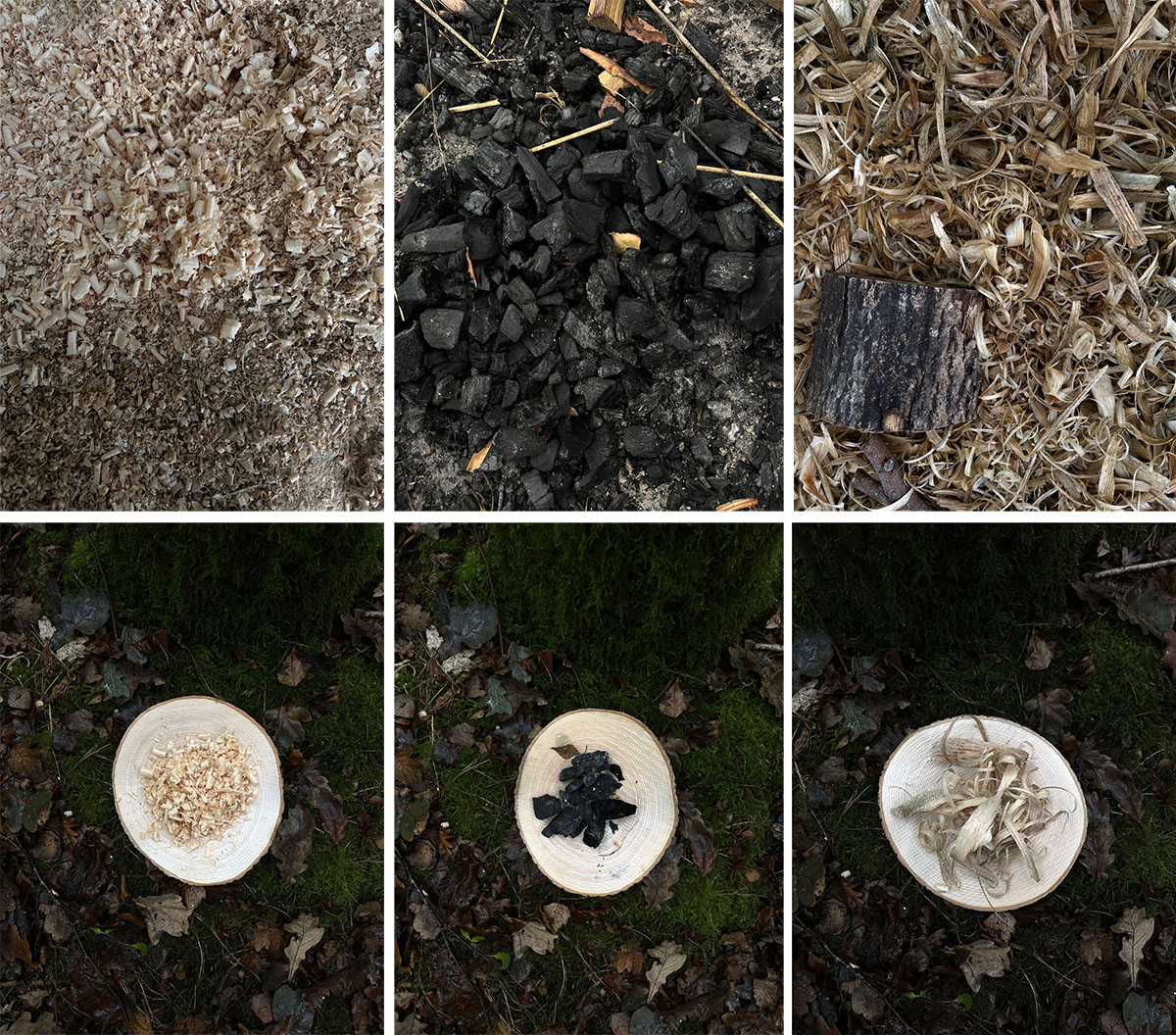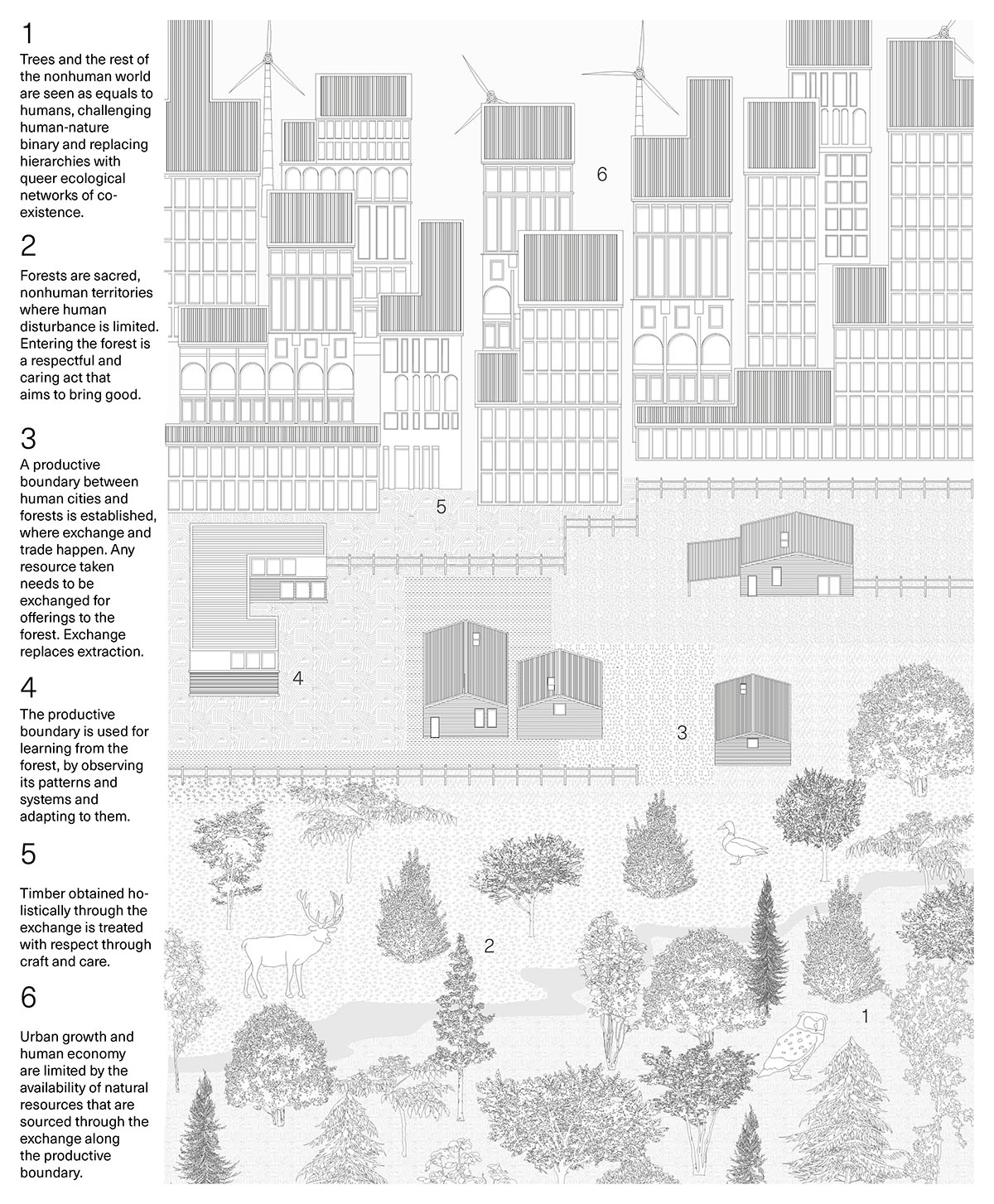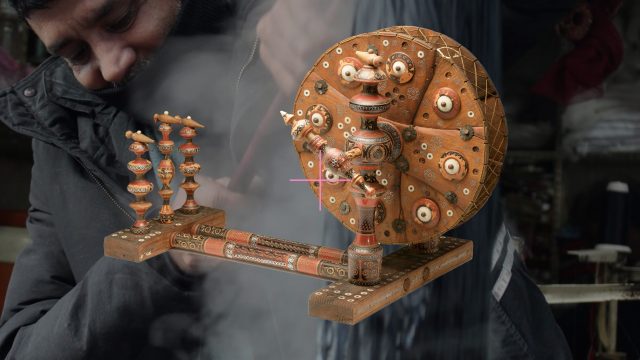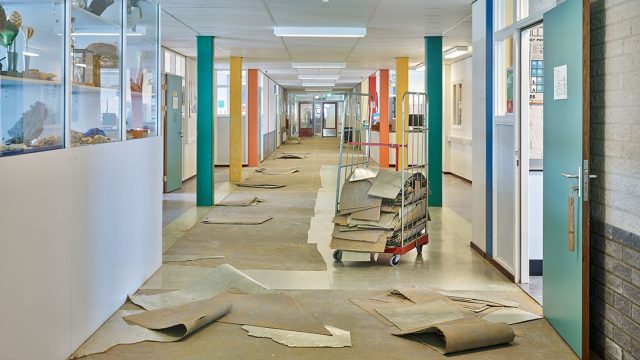Nia Manoylo’s ‘The Exchange’ is one of twelve projects developed during Field Notes, a Summer School organised in 2022.
What follows in this post are Nia’s own words:
For my project, I created offering bowls, a brochure, and a poster exploring queer ecological thinking and how this framework can be applied to forestry. Queer ecology challenges the separation between humans and nature, instead seeing them as part of a collective intertwined system.
The Exchange adopts a nonhuman lens to examine common processes in forestry, such as forest planting, timber extraction and treatment, speculating on how future ecologies might look.
The starting point for the project was thinking about how we currently understand resources such as timber, and how the perception of forests as its source can change. Applying queer ecological thinking and subverting anthropocentric hierarchies, I proposed the idea of a ritual of exchange in the context of timber extraction.

Queering woodwork
My research and project started by getting acquainted with wood as a material, and through material experimentation. In general, the idea to create a plate came from the drying process in woodworking: the wood must be dried before it can be used, and if it dries too quickly it shrinks and warps, distorting itself. I wanted to incorporate this process into my work, so the starting point of my investigation involved taking thin cross-sectional slices of ash and leaving them to dry naturally in the sun.

They warped and bent as they dried. At first, they looked like a perfect set of plates, flat and uniform, but after a day they looked peculiar and unusual. They became hard to balance, and harder to balance anything on top. From a human perspective, they are no longer functional plates, but what if they were a perfect plate for a tree? How would a tree design a plate?
During the summer school, forester Gabriel Hemery talked to us about the future of forestry and how to determine optimal woodland management methods and species composition. Although based on acute observations of the climate and natural lifecycles, he emphasised how woodland management strategies involve a high degree of speculation.
I was inspired by the idea of not trying to maintain control, and instead attempting to learn as much as possible from the forest itself; a process aligned with queer ecological thinking.
I wanted to investigate how to remove human-centric thinking over the forest, and instead observe it, treating it as an equal. What if that way of thinking might provide answers to the climate emergency we face? What answers might my process provide when applied to larger structures and networks?
At the end of its life in a forest, a tree remains as standing deadwood, slowly decomposing, housing thousands of birds, insects, bacteria and fungi. It will practically become absorbed back into the forest, broken down, and reborn again. Since the ash tree I was considering was felled and turned into these nonhuman plates, the question that arose naturally was: what would a tree want to eat from them?
The Exchange
The idea of exchange came from Slavic paganism, and the tradition of bringing offerings to the forest to ask for a good harvest, or even as an act of celebration and respect for all that forests provide.

Through an offering, I envisioned a ritual that enables humans to connect with nature. Similarly, I proposed removing control over the forest, and instead viewing it as an entity to observe and interact with, similar to Gabriel Hemery’s future forestry principles. By observing what forests might need and exchanging resources, the ritual goes beyond assuming we can simply extract resources, and plant more trees to replenish them.
The plates are filled with wood shavings that still contain mycorrhizal species that, in turn, can help trees grow by plugging new growth into the mycelial networks of the forest. Charcoal from a campfire will add minerals to the soil, balancing its acidity. Sawdust will insulate the soil, protecting new growth in winter. By taking them back to a living ash tree in the forest and placing them on the ground, I allow the plates to decompose over time, naturally, giving all their nutrients back to the soil together with their offerings, nourishing the tree.
I wanted to highlight the extractive nature of the timber industry, and instead suggest that we become a part of the forest’s natural lifecycle. What if the very basic principle of traditional offerings was at the very core of environmental politics? What if the timber production industry focused on trading with the forests through this gentle, mindful exchange, instead of just extracting resources?
The resulting manifesto for The Exchange is a set of ideas and questions placed on a landscape that maps a transition from a city to a forest. The manifesto, rather than being a set of rules, is meant to be a generative and ever-changing tool people can take and adapt. By rewriting it from different perspectives, it explores the relationship with forests today and what a new, queer ecological balance, where rituals are more important than human networks, might look like.



